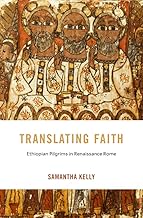Sanctity is constantly redefined. What is holy to one group of people in one place will not seem holy at all to others in another time or place. Think about, even today, the difference between the plain interior of a Presbyterian church, where nothing is supposed to interfere with the contemplation of God, and the ornate decoration of a Catholic church, where the decoration is done to glorify God.
(The above is a chapel in Peru. Different Presbyterian and different Catholic churches will of course differ from each other as well.)
Similarly, the role of saints did not stay the same throughout the Middle Ages. Saints, present in their relics, ready to help (or punish) the deserving (or the wicked), now seem like a standard feature of medieval Christianity, but it was not always that way.
The martyrs of Lyon are a good example of the evolving role of the saints. Supposedly in the year 177 AD a whole group of Christians were martyred in Lyon (traditionally forty-eight of them). Lyon was a major Roman provincial capital in what is now France, over toward the east side, about three-quarters of the way down. It's still a major French city.
The emperors of the first few centuries AD were noted for trying to stop the spread of Christianity in the Roman Empire, and there are numerous stories of Christians put to death for refusing to give up their faith and subscribe to Roman state paganism by sacrificing to Jove (Jupiter). The Lyon martyrs all refused to denounce Christianity and were, it was said in the fourth century, put to death. Enough Christians escaped to tell the sad story.
So much for the original account. But this story lacked relics, which by the late fifth century were becoming a part of the stories of most saints. Christianity was now widely tolerated, and the Christians of Lyon had to explain why, when other cities were discovering the remains of their Christian martyrs, they had nothing beyond the memory. They explained that when their martyrs were killed, the bodies were burned, and their ashes were dumped in the river
A hundred years later, in the sixth century, things had changed again. Christianity was now the official religion of the Empire, and saints were widely revered, not just as holy people worthy of remembrance but as figures still active in the present. Now the Christians of Lyon not only said they had the relics of their martyrs, but they had always had them. The surviving Christians of 177 were said to have gone downstream, miraculously located the water-soaked ashes, and reverently brought them back to be set in a fitting memorial. And the martyrs, who had been nameless in the original account, now had names.
Some of the names might seem a little odd to us, such as Rhône River (the river into which the ashes were dumped), or Mature, or Maternal, or Bibles, or Fourth, or October. They could have originally been nicknames or descriptors, but by the sixth century they were the martyrs' names. A church was erected to honor them, complete with their ashes.
We may chuckle now over this story, but for the sixth-century Christians of Lyon, in a time when other churches around Gaul were finding and honoring the remains of their local martyrs, it was important that the (more or less) historically attested martyrs of their own past be properly acknowledged and revered. After all, they worked miracles!
© C. Dale Brittain 2025
For more on medieval Christianity, see my ebook Positively Medieval, available on Amazon and other ebook platforms. Also available in paperback.

















